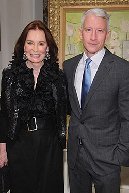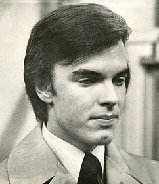A fishing rod is a long, thin rod used by anglers to catch fish by manipulating a line ending in a hook (formerly known as an angle, hence the term "angling").
THE EARLY BEGINNINGS
The first fishing rods were made of wood, stone, and bone and they were called gorges. They were only about 1 in (2.54 cm) long and were pointed at both ends. Bait and line were attached to these rods, which soon were made of metal. People started making longer fishing rods which were about a meter, making them a convenient option for fishing off the shore. These pieces were also used in ancient Greece, Rome, Egypt and also in China, however, different countries produced them from different materials and in different lengths. The fishing rod was such a big part of the old writings that philosophers and scholars like Plato, Dyonisis, Plutarch and Aristotle have even explained how to fish properly using one and what makes a good fishing rod.
MIDWAY THROUGH
For more than a millennia, the fishing rod changed ever so slightly, until 1496 when a nun, Juliana Berners, issued the book “A Treatyse of The Fysshynge Wyth an Angle”. This book explained the various rods lengths ranging from 5.5 to 6.7 m long with lines made out of horsehair. By 1667 there were fishing rods with lines going up to about 24 meters and during the midst of the 17th century, a loop ring was added to the rod’s tip, which made pulling out and releasing the line way easier. A reel made out of wooden spools and a metal ring became common parts too.
CURRENT STATE
The improvement in fishing rods came in the form of different materials, like lancewood, bamboo, and greenheart. Bamboo started being used a bit later than greenheart and lancewood with hexagonal fishing rods entered into production somewhere in the late 19th century by laminating six triangular strips of bamboo. In the 20th century, rods started becoming shorter and stronger but they still stayed lightweight. During that same century, the reign of bamboo rods ended with the introduction of materials such as carbon fibre and fibreglass. Plastic became a popular material for artificial flies and nylon was used for the making of lines which increased the popularity of this sport.
- 6 cups corn flakes cereal, crushed
- 1 teaspoon paprika
- 1/2 teaspoon onion powder
- 1/2 teaspoon garlic powder
- 1/2 teaspoon salt
- 1/2 teaspoon black pepper
- 2 eggs
- 1/2 cup milk
- 2 pounds boneless, skinless chicken breasts, cut into 1-inch chunks
- 3/4 cup barbecue sauce
- 1/4 cup honey
- Preheat oven to 400 degrees F. Coat a baking sheet with cooking spray.
- In a medium bowl, combine cereal, paprika, onion and garlic powder, salt, and pepper; mix well and set aside. In a large bowl, whisk eggs and milk. Add chicken to egg mixture and let sit for 15 minutes. Remove chicken from egg mixture and toss in cereal mixture, coating on all sides. Place on baking sheet. Bake for 15 minutes or until golden brown and no longer pink in center.
- Meanwhile, in a small saucepan over medium heat, combine barbecue sauce and honey, and heat until warm. Drizzle chicken bites with sauce mixture and serve.
HOW TO OBSERVE
- Watch a documentary about the POTUS. For example, The Presidents by the History Channel.
- See if you can name all the presidents in order.
- Who are the three presidents who served in 1841?
- Forty years later, this same phenomenon occurred again in 1881. Name the three presidents who served that year.
- Name the three presidents who died on July 4th.
- Who were the four presidents who were assassinated while in office?
PRESIDENTS DAY HISTORY
- Martin Van Buren, William Henry Harrison, John Tyler
- Rutherford B. Hayes, James A. Garfield, and Chester A. Arthur.
- John Adams, James Monroe, Thomas Jefferson.
- Abraham Lincoln, James A. Garfield, William McKinley, John F. Kennedy



















